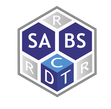AutoDock 2.4 predicts the bound conformations of a small, flexible ligand to a nonflexible macromolecular target of known structure. The technique combines simulated annealing for conformation searching with a rapid grid-based method of energy evaluation based on the AMBER force field. AutoDock has been optimized in performance without sacrificing accuracy; it incorporates many enhancements and additions, including an intuitive interface. We have developed a set of tools for launching and analyzing many independent docking jobs in parallel on a heterogeneous network of UNIX-based workstations. This paper describes the current release, and the results of a suite of diverse test systems. We also present the results of a systematic investigation into the effects of varying simulated-annealing parameters on molecular docking. We show that even for ligands with a large number of degrees of freedom, root-mean-square deviations of less than 1 A from the crystallographic conformation are obtained for the lowest-energy dockings, although fewer dockings find the crystallographic conformation when there are more degrees of freedom.
Benzamidines
,Phosphorylcholine
,N-Acetylneuraminic Acid
,Camphor
,Azepines
,Biotin
,Camphor 5-Monooxygenase
,HIV Protease
,Trypsin
,Bacterial Proteins
,Streptavidin
,Hemagglutinins
,HIV Protease Inhibitors
,Ligands
,Crystallography, X-Ray
,Cluster Analysis
,Molecular Conformation
,Protein Conformation
,Protein Binding
,Computer Simulation
,Software
,User-Computer Interface
,Immunoglobulin Fab Fragments



